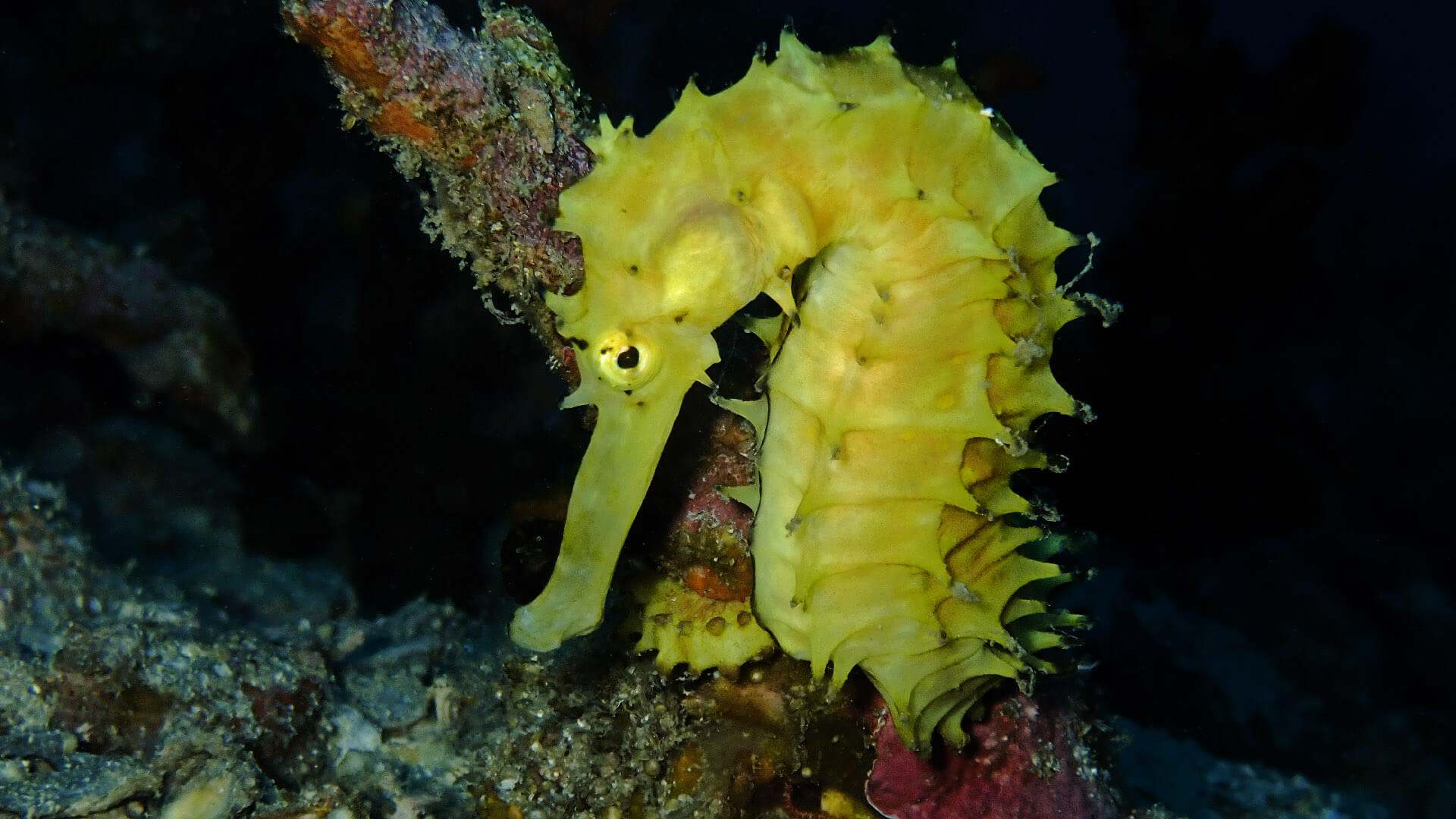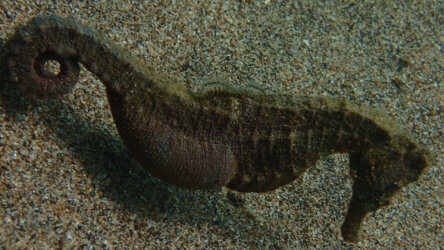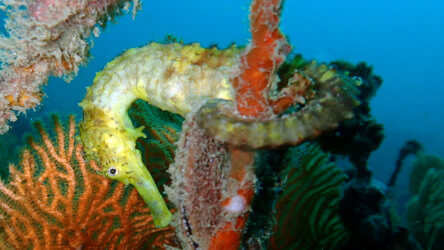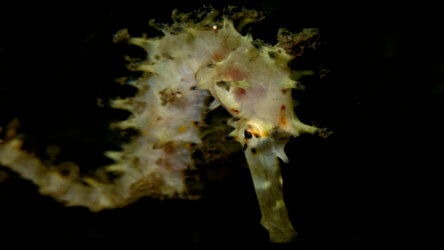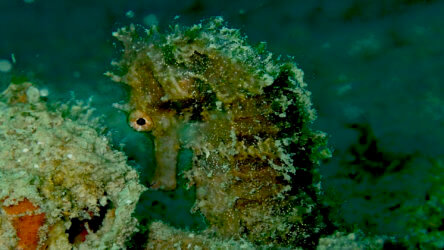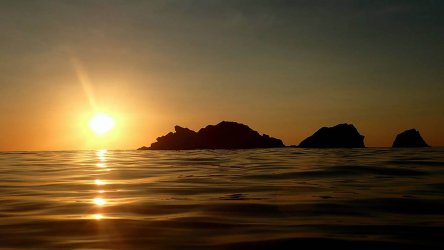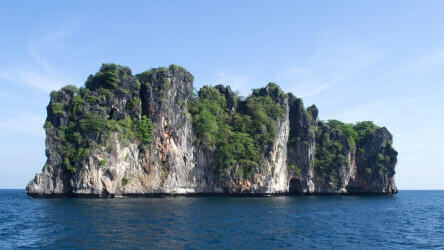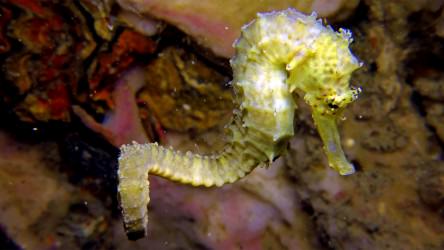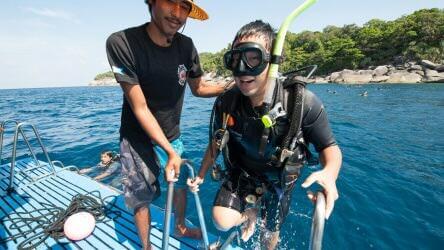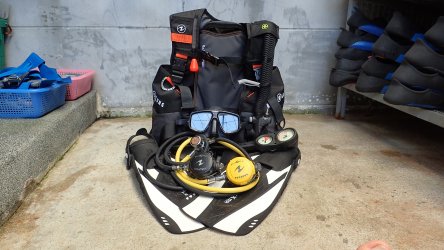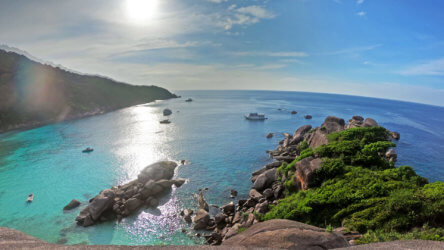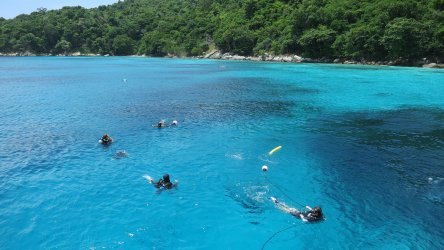What Do We Know About Our Seahorses In Phuket?
We’re very lucky to get at least four different species of seahorse in Phuket. They’re not hanging off every branch of coral so our guides have to work hard to find them but find them we do. Some of our Phuket diving trips are seem more attractive to seahorses than others. Anemone Reef, Shark Point and Koh Doc Mai are very productive but for some reason King Cruiser isn’t. For the biggest variety of species you can try Kata Beach.
Monsters?
Never heard any diver describe seahorses as anything else but cute, we even get squeals of delight. So their latin name is a bit of a mystery. All seahorses fall in the hippocampus genus. Hippo means horse and campus means sea monster. Can’t imagine what kind of timid individual thought these unassuming creatures are monsters. Their family name (Syngnathidae) means fused jaw.
They’re Fish Not Horses Right?
Yes! Although they don’t resemble any other fish group they are indeed fish. They belong to the same family as all other bony fish. They don’t have scales like other fish, instead seahorses have thin skin stretched over bony plates. Some have spines or bumps to make them even more unappetising to predators, which they don’t have to many of. They can change colour and grow skin filaments to match their surroundings.
Hungry Hungry Hippo (campuses)
Seahorses have no teeth or stomach. Their digestive system is very inefficient so they have to eat at every opportunity. One captive juvenile was recorded eating almost 3,000 brine shrimps in a single day. They’ll eat anything that they can suck into their tube like mouths including small fish. Seahorses eyes can move independently from each other just like a chameleons. This gives them maximum opportunity to see all available food without moving and so revealing their presence.
Committed Lovers
Most seahorse species are monogamous for at least the breeding season but some for life. Seahorses live from 1 – 5 years as far as we know so I guess it’s not that much of a commitment. Pairs of some species will greet and dance together every morning before going their separate ways to feed. Captive seahorses are slightly more liberal and will mate with multiple partners.
A well known fact about seahorses is that the male gives birth. The female will lay eggs in the brood pouch of the male and he will take care of them until they’re ready to hatch. It’s a bit more than locking the the kids in a cupboard though. The male gets labour contractions that can last up to 12 hrs.
The pouch acts very much like a womb, bringing nutrients and oxygen to the developing eggs. The ‘pregnancy’ lasts up to one month and the young are born as perfect miniatures ready to devour the surrounding plankton. Depending on the species, seahorses give birth to between 5 and over 1,500 young. The male will except the next batch of eggs straight away.
What Species Do We See?
Identifying the different seahorses in Phuket is quite difficult but we believe at least four have been confirmed. Below are the four species we know of.
Common Seahorse (Hippocampus kuda)
Dive sites: Kata Beach
Size: Up to 17cm
Distinguishing features: Smooth looking, low coronet
Tigertail Seahorse (Hippocampus comes)
Dive sites: Shark Point, Anemone Reef, Koh Doc Mai, Koh Bida Nok
Size: Up to 19cm
Distinguishing features: Striped tail, nose spine, low blunt spines, low coronet
Thorny Seahorse (Hippocampus histrix)
Dive sites: Anemone Reef, Richelieu Rock, Kata Beach
Size: 17cm
Distinguishing features: Sharp spines, prominent nose spine, long snout, spines on coronet
Hedgehog Seahorse (Hippocampus spinosissimus)
Dive sites: Kata Beach
Size: Up to 17cm
Distinguishing features: Low blunt spines, no nose spike, weed like filaments, short snout
Difficult to I:D
Seahorses are notoriously hard to properly identify, although the resulting arguments can be fun. There are currently 44 species listed and more are waiting to be taxonomised. To identify any seahorses you see, we highly recommend you go to the iseahorse.org webpage that has excellent identification diagrams.
If you want to see some of our seahorses in Phuket then contact us now to get the best recommendations on where to dive with the best scuba diving centre in Phuket.
Contact Us To Find Phuket’s Seahorses!
Posted in Rare & Peculiar Critters on .
